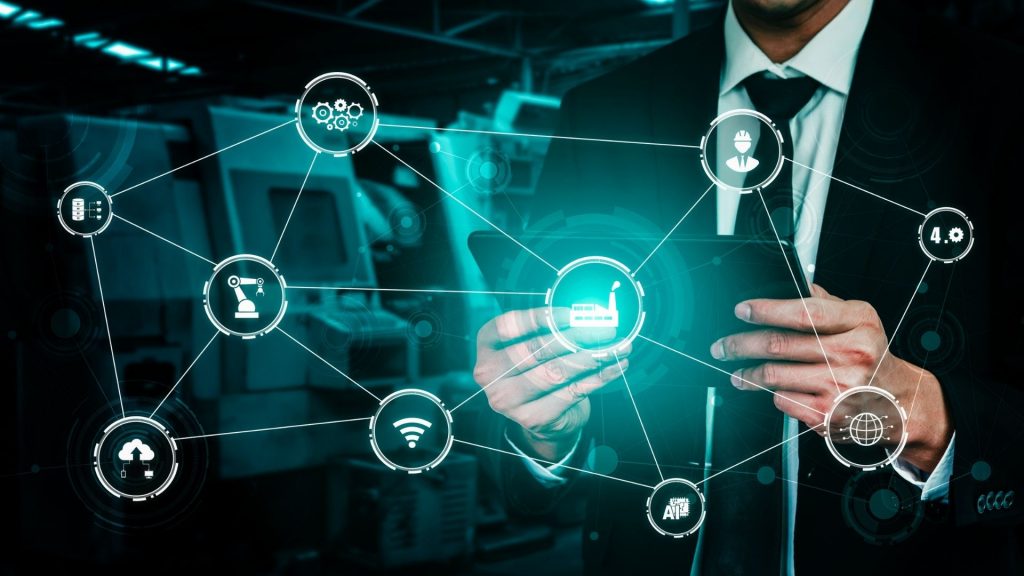We often talk about the 4IR and 5IR as if they are “something out there”. But the reality is that these revolutions are happening right now. And as with any revolution, our society and workplace are changing – different world views, different concepts of work, and a different concept of self.
The world cannot afford to sit back and hope that we can continue as normal. We can take action now that will set us up for leadership roles as we roll into the future.
Let’s uncover what you can do now to be a relevant, competent leader as we go into 5IR.
1. Understand SDGs
The Sustainable Development Goals (SDGs) are seventeen interlinked global goals designed as a framework for a better and more sustainable future for all of us. The SDGs were set up in 2015 by the United Nations General Assembly known as Agenda 2030. There are 17 SDGs:
- No Poverty
- Zero Hunger
- Good Health and Well-being
- Quality Education
- Gender Equality
- Clean Water and Sanitation
- Affordable and Clean Energy
- Decent Work and Economic Growth
- Industry, Innovation and Infrastructure
- Reducing Inequality
- Sustainable Cities and Communities
- Responsible Consumption and Production
- Climate Action
- Life Below Water
- Life On Land
- Peace, Justice, and Strong Institutions
- Partnerships for the Goals
The company you work for, now and in the future, can and must contribute to the SDGs. In essence, conscious companies should manage their businesses responsibly and help to solve societal and environmental challenges through business innovation and collaboration. This is where you come in as a leader.
With an informed understanding of the SDGs, you will be able to drive initiatives that set your organisation apart. Investors, recruiters and leading organisations are looking for leaders who can help them effectively manage the implementation of the SDGs. You can start by finding out more about the SGDs in the links below, and devise ways of incorporating them into your work.
2. Understand global warming
There’s no escaping global warming. It crosses frontiers, ignores jurisdictions and affects all our lives. If we do not make radical changes to our industrial operations, we’ll live in a world of extreme weather conditions, food insecurity, and flooding of low-lying areas.
Your role as a 5IR leader is to understand how your organisation contributes to global warming and how your organisation can limit its negative footprint. It’s no surprise that global warming features strongly in the SDGs.
3. Understand tech
Many managers come to leadership without a background in technology. And up to now, that was the norm for many folks. However, with the 4IR with us now and the 5IR on our doorstep, leaders must understand the basics of technology.
This includes how it works, the vocabulary and terminology of technology and what it can do. It’s never too late to develop a non-technological ‘big picture’ of technology and information systems to help you understand what technology can do for you today – and tomorrow.
It’s not necessary to be a competent user, but leaders of tomorrow must have a grasp of technology, so they can manage their teams and understand the strategic implications.
Fortunately, there’s a smart way to make sense of this complexity. A variety of short digital technology courses on cybersecurity, machine learning, artificial intelligence, data science, and coding are available online. Start with an introductory course and work your way up from there.
4. Understand gender issues
Leaders have to be sensitive to gender issues in the workplace, and particularly the challenges faced by women. We’d be hard-pressed to find an organisation that has no women in it. Women face harassment in the workplace, often do not receive the same remuneration as men doing similar work, are not proportionately represented in senior management and often don’t get the learning and work opportunities that are granted to men.
Organisations that are not gender-sensitive will find they are unable to attract the best talent, and will not be considered as a top tier employer. No organisation can afford this in the competitive 4IR world and forthcoming 5IR world. Broaden your understanding of gender issues in the workplace via the links below.
5. Understand stakeholder engagement
Stakeholder engagement helps organisations to proactively consider the needs and desires of anyone who has a stake in the organisation, which can foster connections, trust, confidence, and buy-in for your organisation’s key initiatives. A stakeholder is any person or organisation who is affected by or who can affect the operations of an organisation.
What is stakeholder engagement? It’s a process for listening to, collaborating with, and informing stakeholders. This process entails identifying, mapping and prioritising stakeholders to determine the best tactics for effective communication while making the best use of available resources. Stakeholders have found a powerful voice in social media, and hence leaders must understand the tools and methods of this craft.
It can mitigate potential risks and conflicts with stakeholder groups, including uncertainty, dissatisfaction, misalignment, disengagement, and resistance to change. A good starting point is:
6. Clarify your values and your purpose
The world of 4IR and 5IR is turbulent and unpredictable. We can’t do anything about the world we live in, but we can determine how we choose to face that world.
This is why having a sense of purpose is so important. A sense of purpose drives you toward a satisfying future. A sense of purpose can motivate you and change the way you act, feel and think. It helps you to set priorities, to go after the things that matter. And it has to make sense for you and where you are in your life.
7. Assess your management style
The 4th and 5th Industrial Revolutions have changed all the accepted ways of understanding the world. Old fashioned command and control leadership styles just don’t make sense in a high-tech digital world.
The rapid changes in technology have made the world a global village. The Covid-19 pandemic has meant we have to communicate and run our organisations in a different and uncharted way. People from diverse backgrounds and communities have to work creatively and productively within one organisation.
Hierarchical command and control no longer work – the world of artificial intelligence, big data and machine learning requires a very different way of managing. It’s not enough to re-tread our old models of leadership. We need new insights into how to lead in this connected maelstrom of modern living.
Prof. MS Rao, a leadership expert, has created the concept of Soft Leadership for these times. Soft leaders adopt tools such as influence, persuasion, negotiation, motivation, recognition, appreciation, and collaboration for the collective good. This style calls upon leaders to make a difference in the lives of others. And this is very much in keeping with the worldview of 5IR.
Soft leadership is not self-centred but is centred on others. Soft leadership emphasises a concern for people, i.e., on employees who are the precious human resources. Hence, soft leadership gives a soft touch to people who in turn give a real touch to customers through dedication and discipline.
Conclusion
These seven areas of opportunity may seem daunting. Each of the opportunities outlined above is complex, and evolving as we speak. They will continue to make sweeping changes to our world. You now have these concepts uppermost in your mind, and as you explore them, you’ll continually make the connections to your lived experience. You will discover your way of responding to them. You will make your own contribution in the 5IR world. For a manager and a leader, that’s an exciting prospect.
Related Post: 10 Ways to Become a Better Manager






